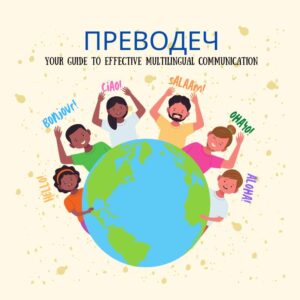News Reporter 7.5: The Frat Boy Photographer Controversy

news reporter 7.5: the frat boy photographer
In an era where a single image can ignite a global firestorm, a local news reporter found herself thrust unwillingly into the spotlight. The weapon wasn’t a gun or a scathing expose, but rather the lens of a frat boy’s camera. The resulting photo, tastelessly capturing the reporter in a compromising moment, ignited a fierce online debate about ethics, consent, and the safety of journalists simply doing their jobs.
The “frat boy photographer” is, unfortunately, not a new phenomenon. This disturbing trend involves the non-consensual photographing of women, often in public settings, with the images then shared online for ridicule or worse. The News Reporter 7.5 incident has become another flashpoint in this ongoing pattern of behavior.
This article will delve into the complex issues arising from the “news reporter 7.5: the frat boy photographer” controversy. We’ll examine the ethical implications, the potential impact on the reporter herself, and the urgent questions it raises about the challenges facing journalists in a world where social media amplifies both the best and worst of human behavior.
Table Of Contents
- 1 1. What Happened: A Breakdown of “News Reporter 7.5: The Frat Boy Photographer” Incident
- 2 2. Why It Matters: The Ethical Issues Surrounding the Photo
- 3 3. The Reporter’s Perspective
- 4 4. A History of the “Frat Boy Photographer” Trope
- 5 5. The Responsibility of Social Media Platforms
- 6 6. Protecting Journalists in the Field
- 7 Conclusion: A Call for Change
1. What Happened: A Breakdown of “News Reporter 7.5: The Frat Boy Photographer” Incident
While fulfilling her duties, a female reporter for a local news station (whose name and affiliation we are withholding out of respect for her privacy) was covering a lively street festival in a college town. A group of young men, later identified as members of a fraternity at the nearby university, noticed the reporter on the scene.
One of the fraternity members decided to take a photo of the reporter. However, the composition and intent of this photo were far from professional. The image, crudely captured, focused inappropriately on the reporter’s body. This image was then shared within the fraternity member’s social circle, rapidly escaping into the wider social media ecosystem.
Within hours, the image of the news reporter had gone viral. It was amplified across multiple platforms, accompanied by derogatory comments, sexualized remarks, and cruel memes. The speed and spread of the photo highlight the terrifying power of the internet to both dehumanize and inflict lasting damage on an individual’s reputation, particularly women.
2. Why It Matters: The Ethical Issues Surrounding the Photo
The virality of the photo in the “news reporter 7.5: the frat boy photographer” incident raises profound questions about ethics, power, and the increasingly blurry line between the public and the private.
The Core Issue: Lack of Consent
At its heart, this incident boils down to a blatant violation of consent. The news reporter was not asked for permission to be photographed in this manner, nor did she agree to have the image distributed. This complete disregard for her autonomy highlights a troubling attitude that views women as objects for entertainment rather than individuals deserving respect.
Damage to Reputation
The non-consensual and exploitative nature of the photo carries enormous potential to harm the reporter’s professional reputation. In an industry where credibility is paramount, such an image can create unfair and damaging associations, especially within the online sphere where content can live on indefinitely.
Power Imbalance
The frat boys involved likely felt empowered by their anonymity and group mentality. The news reporter, on the other hand, was a lone woman carrying out her professional duties. This power dynamic magnifies the ethical violation, revealing how easily privilege and social position can be weaponized against working women.
Public Figures vs. Private Rights
The incident spotlights a complex reality: news reporters, by the nature of their work, exist in a semi-public space. However, this does not nullify their fundamental right to privacy and bodily autonomy. The photo crossed the line between documenting a newsworthy event and deliberately exploiting a woman’s image without her permission.
3. The Reporter’s Perspective
While it’s important to respect the reporter’s privacy and avoid speculation about her specific feelings, incidents like the “news reporter 7.5: the frat boy photographer” highlight the very real and serious potential for both emotional and professional harm.
Potential Emotional Impact
- Violation and Betrayal: Incidents like this shatter a journalist’s sense of safety while carrying out their duties. The non-consensual image and its spread can leave individuals feeling violated, objectified, and vulnerable in both online and offline spaces.
- Anxiety and Fear: The potential for online harassment and the unpredictable nature of viral content can create a heightened state of anxiety for the targeted individual. This can manifest as fear of leaving home, covering similar events, or persistent worries about further abuse.
- Self-Doubt and Shame: The reporter may experience intense feelings of shame and self-blame, even though they are not at fault. Societal attitudes often shift responsibility onto victims in these situations, leading to a damaging internalization of harmful narratives.
Potential Professional Impact
- Damage to Credibility: The reporter could face attempts to discredit their work or undermine their authority. The photo might be used to cast doubt on their professionalism or create false narratives to dismiss their reporting.
- Lost Opportunities: Understandably, the reporter may hesitate to cover similar events or seek out stories in public settings. This can impact their growth and the types of assignments they feel safe taking on.
- Mental Health Toll: The combined weight of personal and professional stress can lead to burnout, anxiety disorders, or depression. This may require time away from work or impact their long-term ability to function within the demanding field of journalism.
Even if the reporter in this case chooses not to speak publicly, we have a responsibility as consumers of news to acknowledge the human cost behind viral incidents. Empathy and a refusal to participate in the spread of harmful content are the first steps toward creating a safer environment for journalists to do their essential work.
4. A History of the “Frat Boy Photographer” Trope
Sadly, the “news reporter 7.5: the frat boy photographer” incident isn’t an anomaly. It fits into a disturbing pattern of behavior often dismissed as “boys being boys”. Here’s why this pattern demands deeper analysis:
- Documented Precedents: Regrettably, there are numerous past instances of women being photographed or filmed without consent in public settings, often with a focus on their bodies. These images then circulate on social networks, message boards, and websites designed to ridicule and exploit.
- Specific Targeting of Reporters: Female journalists, particularly those on live television, seem particularly vulnerable. There’s an element of both disrespecting women and undermining the authority of the press.
- The Underlying Culture: Several harmful societal issues contribute to enabling this behavior:
- Toxic Masculinity: The “frat boy photographer” trope often arises within cultures that promote male entitlement, objectification of women, and the notion that “locker room talk” translates to the real world without consequences.
- Privilege: Those engaging in this behavior often come from backgrounds of privilege (social, racial, economic) where they may feel shielded from facing the full repercussions of their actions.
- Minimizing Harm: Phrases like “boys being boys” and dismissive attitudes towards online harassment minimize the violation and damage experienced by the targeted women.
The Importance of Recognizing the Pattern
Linking the “news reporter 7.5: the frat boy photographer” incident to this broader pattern has several crucial purposes:
- Exposes Systemic Issues: Seeing this not as an isolated event, but part of a larger problem, highlights the urgent need to address toxic masculinity, privilege, and attitudes towards women in many social circles.
- Supports Victims: Understanding they’re not alone can be validating for individuals targeted in this way. It encourages speaking out and challenges the culture of shame that silences victims.
- Demands Accountability: Framing this behavior as part of a pattern helps push back against the idea that it’s harmless. It underscores why institutions (fraternities, universities, social media companies) need stricter measures to deter and punish offenders.
5. The Responsibility of Social Media Platforms
The virality of the photo in this case reveals the tremendous power social media platforms wield in shaping the spread of information – or misinformation. This raises pressing questions:
- Speed of Spread: Social media’s algorithms are designed to amplify content that generates engagement, regardless of whether it’s harmful. In the “news reporter 7.5: the frat boy photographer” case, the image likely spread like wildfire due to its shocking and exploitative nature. This speed outpaces most content moderation efforts.
- Existing Policies: Most major platforms have policies against non-consensual sexual content, harassment, and cyberbullying. However, the sheer volume of content uploaded every minute, coupled with the reliance on AI-based detection, often creates loopholes for harmful material to persist.
- The Debate on Responsibility: There is a fundamental tension between the protection of free speech and social platforms’ responsibility to shield users from harm. Is it their role to act as moral arbiters, or should they avoid excessive censorship? This ethical quandary is intensified as social media becomes increasingly intertwined with our daily lives.
Do Platforms Have a Duty to Act?
This incident raises arguments for a stricter and swifter approach to content takedown on social platforms:
- Duty of Care: Platforms could be seen as having a duty of care towards users, especially vulnerable groups often targeted by online abuse, like women and journalists. Inaction can be interpreted as a tacit endorsement of harmful behavior.
- Amplification of Harm: Leaving the image unchecked allows continued harassment of the reporter and further degrades her reputation. Additionally, it normalizes this behavior for others within the platform’s ecosystem.
- Ethical vs Legal: While there may not always be clear legal recourse in such cases, social platforms could take a stronger ethical stance and prioritize user safety, particularly when it comes to nonconsensual, image-based abuse.
Potential Actions for Social Media Platforms
While there’s no easy solution, social media platforms can work towards a better balance between free expression and user protection. Here are some actionable steps:
- Enhanced Reporting Tools: Make it simple and intuitive for anyone (including bystanders) to report harmful images or content with clear categories for non-consensual content and the targeting of specific groups (like journalists). Streamlined reporting should trigger faster human review.
- Proactive AI: Invest heavily in improving AI’s ability to detect potentially harmful images and patterns of harassment. Proactive detection, when combined with human oversight, could lead to the prompt removal of content before it spreads widely.
- Partnerships and Education: Collaborate with organizations that specialize in combating online harassment and image-based abuse. These relationships can inform content moderation policies and support educational campaigns aimed at users.
- Zero-tolerance for Repeat Offenders: Implement clear consequences for those who repeatedly share harmful content. This could include account suspensions or the removal of the ability to upload images and videos.
- Transparency: Social platforms should be more transparent about content takedown rates, their response times, and how their algorithms may be inadvertently amplifying problematic content. This transparency allows for greater public accountability.
Call to Action: Demanding Change
The “news reporter 7.5: the frat boy photographer” incident underscores that waiting for social media platforms to self-regulate may not be enough. As users, we have the power to demand greater accountability and prioritize platforms that put user safety at the forefront. Here’s how you can take action:
- Voice Your Concerns: Contact the social media platforms you use and express your concerns about the spread of harmful content. Demand swifter takedowns, more robust reporting tools, and stricter policies against image-based abuse.
- Support Advocacy Groups: Engage with organizations specializing in fighting online harassment and pushing for platform accountability. Amplify their campaigns for change and consider donating if possible.
- Vote with Your Clicks: Be mindful of the social media platforms you support. Seek out alternatives that prioritize user safety, have clear policies against harassment, and demonstrate transparency in their moderation practices.
Our collective voices and choices have the potential to push the social media landscape in a more responsible and ethical direction.
6. Protecting Journalists in the Field
This incident highlights a broader concern: journalists, especially women, often feel unsafe while doing their jobs. Here’s where we can explore potential protective measures:
Newsroom Safety Protocols:
- Risk Assessment: News organizations should establish clear practices for assessing potential risks associated with assignments. Is the reporter covering a potentially hostile crowd or event? Will there be adequate security?
- Training and Resources: Provide training on de-escalation tactics, how to handle harassment, and self-defense techniques specifically tailored for journalists. Offer resources like panic buttons, secure communication channels, and on-demand counseling.
- Check-Ins & Support: Implement a system where reporters regularly check in, especially when covering sensitive stories or working in the field alone. Establish a culture where reporting harassment is encouraged and followed up on by management.
Addressing Female-Specific Risks:
- Partner System: Consider pairing female reporters with a colleague when possible, especially for high-risk assignments.
- Discreet Filming: Train female journalists in techniques for filming discreetly in situations where they may feel vulnerable.
- Safe Transportation: Offer secure transportation to and from assignments for female reporters, especially in late hours or when traveling through less-safe areas.
Legal Questions:
- The Law vs. Reality: Research existing laws regarding harassment and assault. Are they sufficient to protect journalists? Often, laws are focused on physical assault but may not adequately address non-consensual photography or online abuse.
- Legal Support: Should news organizations provide legal resources to aid reporters involved in incidents like this? This could act as a deterrent to perpetrators and signal to journalists that they’re not alone in seeking justice.
- Pushing for Change: Could the industry push for stronger legislation that specifically criminalizes the non-consensual photographing/sharing of individuals, with stricter penalties when targeting journalists?
Conclusion: A Call for Change
The “news reporter 7.5: the frat boy photographer” incident is a stark reminder that we are far from a world where journalists, especially women, can carry out their work without facing harassment and exploitation. This disturbing case highlights a number of key points:
- Consent Matters: The image of the news reporter was taken and spread without her permission. This underscores the absolute necessity of consent in every situation, both online and offline.
- Journalists Are Not Targets: They play a crucial role in informing the public. Targeting them with harassment and abuse undermines the free flow of information essential to a functioning democracy.
- Culture Shift Required: The “frat boy photographer” trope exposes toxic cultural attitudes that must be addressed. Dismantling toxic masculinity, privilege, and the normalization of objectifying women are crucial steps.
- Platforms Have Power: Social media companies wield immense influence over the information and images we consume. They have both the ability and the responsibility to protect users and combat harmful content.
It’s Time to Act
The image of the news reporter may fade from the headlines, but the issues it brought to light demand our sustained attention. We must collectively insist upon:
- Ethical standards: Hold individuals accountable for their actions and push back against the idea that online spaces are exempt from ethical behavior.
- Respecting Journalists: Recognize the value journalists bring to society and the challenges they face, especially women in the field.
- Critical Thinking: Don’t be a passive consumer of media. Consider the source, look for signs of manipulation, and refuse to contribute to the spread of harmful content.
The “news reporter 7.5: the frat boy photographer” incident should be a catalyst for change – a change towards a safer world for journalists, respect for consent, and a more responsible social media landscape.
Note: This conclusion brings the focus back to the core purpose of your blog post and offers a powerful call to action that encourages readers to participate in creating a better world.







